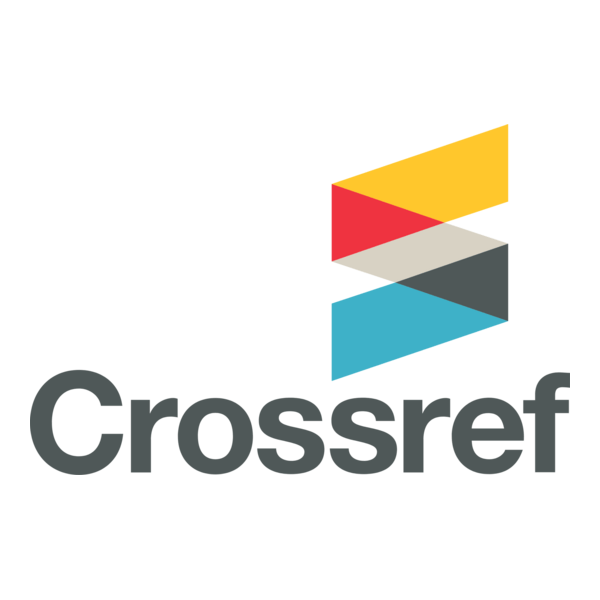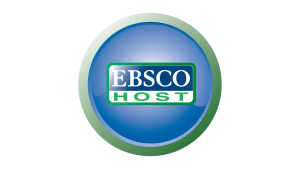Food Marketing Regulations and Childhood Obesity Across America
An Analysis on the Effects of Food Marketing on Childhood Obesity and the (In)effectiveness of Laws & Regulatory Measures on Food Marketing in The United States and Brazil, in comparison with Chile
DOI:
https://doi.org/10.37886/ip.2024.005Keywords:
Comparative Law, Food Labeling, Childhood Obesity, Food Advertisement, Regulations, Law, Nutrition, Child-oriented marketingAbstract
Research Question (RQ): What is the impact of food marketing and advertising on childhood obesity?
Purpose: The purpose of this research is to analyze the existing regulatory measures and legislation on food marketing aimed at children, understand its effects and look for ways to reduce childhood obesity.
Method: This research was conducted through analysis and comparison of the current legislation and regulatory measures on food marketing enforced in Brazil, Chile and the United States. As well as, consulting multiple scientific articles on the research subject.
Results: Regulations, such as the ones implemented in Chile, have shown to be effective when it comes to limiting the exposure of children to persuasive and manipulative food marketing. Consequently, causing a significant decrease in children’s consumption of such food products, which, in turn, can lead to the decrease in childhood obesity.
Organization: This research can help governments and organizations find effective measures to create, improve as well as enforce legislation and regulations on child-oriented food marketing.
Society: People are susceptible to the influence and manipulation of persuasive marketing strategies. Thus, children, being the more easily influenced part of the population, are even more vulnerable to such tactics. This research paper helps further showcase this fact as well as the dangers posed by these marketing strategies, subsequently proposing options to counteract the impact of said damaging tactics.
Originality: Unlike most others of its kind, this research brings a comparative approach when analyzing the effectiveness of regulations in Latin American countries and the United States when it comes to the marketing of ultra-processed food products directed at children.
Limitations / further research: Limitations faced were the lack of primary research sources and lack of in-depth research sources in this specific topic. Further research could expand the subject countries to include other Latin American countries, as well as European and Middle Eastern countries.
Keywords: Child-oriented marketing, Nutrition, Law, Regulations, Food Advertisement, Childhood Obesity, Food Labeling, Comparative Law.
References
Black, J. D. (2013, July 18). 7 questions about smart snacks in school standards. The Pew Charitable Trusts. https://www.pewtrusts.org/en/research-and-analysis/articles/2013/07/18/7-questions-about-smart-snacks-in-school-standards
Branding. (2022). In Cambridge Dictionary. Retrieved September 4, 2022, from https://dictionary.cambridge.org/dictionary/english/branding
Constitution of the Federal Republic of Brazil (Brazil, 1988). https://www.stf.jus.br/arquivo/cms/legislacaoConstituicao/anexo/brazil_federal_constitution.pdf
Código De Defesa Do Consumidor. (Brazil, 1990). https://www.planalto.gov.br/ccivil_03/leis/l8078compilado.htm
Instrução Normativa - IN Nº 75/2020. ANVISA - Agência Nacional de Vigilância Sanitária (Brazil, 2020, October 8). https://antigo.anvisa.gov.br/legislacao#/visualizar/434474.
Lei Nº 11.346/2006. (Brazil, 2006). https://www.planalto.gov.br/ccivil_03/_ato2004-2006/2006/lei/l11346.htm
Resolução CONANDA Nº 163/2014, de 13 de Março de 2014. (Brazil, 2014, March 13). https://site.mppr.mp.br/crianca/Pagina/Resolucao-CONANDA-no-1632014-de-13-de-marco-de-2014
Resolução Da Diretoria Colegiada - RDC Nº 429/2020. ANVISA - Agência Nacional De Vigilância Sanitária. (Brazil, 2020, October 8). https://antigo.anvisa.gov.br/legislacao#/visualizar/434473
Superior Tribunal de Justiça. (2017, May 1). Campanha Da Sadia é Considerada Abusiva Por Incentivar Consumo De Alimentos Calóricos Pelas Crianças. https://www.stj.jus.br/sites/portalp/Paginas/Comunicacao/Noticias-antigas/2017/2017-05-01_08-14_Campanha-da-Sadia-e-considerada-abusiva-por-incentivar-consumo-de-alimentos-caloricos-pelas-criancas.aspx
Cantu-Pawlik, S. (2018, October 17). The state of policy on junk food and drink marketing to kids. Salud America. https://salud-america.org/the-state-of-junk-food-and-drink-marketing-to-kids/
Nutrition, C. F. F. S. a. A. (n.d.). Food Labeling & Nutrition. U.S. Food And Drug Administration. Retrieved September 7, 2022, from https://www.fda.gov/food/food-labeling-nutrition
Cezar, A. (2008). The Effects of Television Food Advertising on Childhood Obesity. Nevada Journal of Public Health, 5(1), Article 2. https://digitalscholarship.unlv.edu/njph/vol5/iss1/2/?utm_source=digitalscholarship.unlv.edu%2Fnjph%2Fvol5%2Fiss1%2F2&utm_medium=PDF&utm_campaign=PDFCoverPages
Ley 20606 | Sobre Composición Nutricional De Los Alimentos y Su Publicidad. (Chile, 2021, August 18) www.bcn.cl/leychile. https://www.bcn.cl/leychile/navegar?idNorma=1041570&idVersion=2021-08-18&idParte=
Ley de etiquetado de alimentos. (2019, July 2). Portal Chile Atiende. Retrieved September 10, 2022, from https://test.chileatiende.cl/fichas/40557/1/pdf
UNC Gillings School of Global Public Health. (2021, September 1). Chile’s Law of Food Labeling and Advertising encourages notably healthier choices - UNC Gillings School of Global Public Health. https://sph.unc.edu/sph-news/chiles-law-of-food-labeling-and-advertising-encourages-notably-healthier-choices/
Connor, S. M. (2006). Food-Related Advertising on Preschool Television: Building brand recognition in young viewers. Pediatrics, 118(4), 1478–1485. https://doi.org/10.1542/peds.2005-2837
Dixon, H., Scully, M., Wakefield, M., White, V., & Crawford, D. (2007). The effects of television advertisements for junk food versus nutritious food on children’s food attitudes and preferences. Social Science & Medicine, 65(7), 1311–1323. https://doi.org/10.1016/j.socscimed.2007.05.011
UNC Global Food Research Program. (2020, September). Front-of-Package (FOP) Food Labelling: Empowering Consumers to Make Healthy Choices. University of North Carolina at Chapel Hill. Retrieved September 8, 2022, from https://globalfoodresearchprogram.org/wp-content/uploads/2020/08/FOP_Factsheet_UNCGFRP_2020_September_Final.pdf
Front-of-package labeling. (n.d.). PAHO/WHO | Pan American Health Organization. https://www.paho.org/en/topics/front-package-labeling#:~:text=One%20of%20the%20key%20policy,%2C%20trans%20fats%2C%20and%20sodium
American Psychological Association. (2010, November 17). The impact of food advertising on childhood obesity. https://www.apa.org. https://www.apa.org/topics/obesity/food-advertising-children
Joelving, F. (2011, June 27). Ban fast food ads on TV: U.S. doctors. Reuters. Retrieved September 6, 2022, from https://www.reuters.com/article/us-fastfood-ads-idUSTRE75Q0K820110627/
Mhurchú, C. N., Eyles, H., & Choi, Y. (2017). Effects of a voluntary Front-of-Pack nutrition labelling system on packaged food reformulation: The Health Star Rating System in New Zealand. Nutrients, 9(8), 918. https://doi.org/10.3390/nu9080918
World Health Organization: WHO. (2021, June 9). Obesity and overweight. https://www.who.int/news-room/fact-sheets/detail/obesity-and-overweight
Plan of Action for the Prevention of Obesity in Children and Adolescents. (2015, January 29). PAHO/WHO | Pan American Health Organization. Retrieved September 4, 2022, from https://www.paho.org/en/documents/plan-action-prevention-obesity-children-and-adolescents
Regulation of Advertising and Labeling: Conditions of Private Information Supply. (n.d.) Economic Research Service-USDA. Retrieved September 6, 2022, from https://www.ers.usda.gov/webdocs/publications/41905/51665_ah715c.pdf?v=0.
The role of media in childhood obesity. (2004, February 1). https://search.issuelab.org/resource/the-role-of-media-in-childhood-obesity.html
Tools for schools: Focusing on smart Snacks | Food and Nutrition Service. (2013, October 31). Retrieved September 8, 2022, from https://www.fns.usda.gov/cn/smart-snacks-school
United States Department of Agriculture. (n.d.). Smart Snacks in School. Retrieved September 8, 2022, from https://fns-prod.azureedge.us/sites/default/files/allfoods_infographic.pdf
Andrew Seidman, Washington Bureau. (2011, July 9). Food, advertising industries call voluntary guidelines unreasonable - Los Angeles Times. Los Angeles Times. Retrieved September 5, 2022, from https://www.latimes.com/health/la-xpm-2011-jul-09-sc-dc-0708-food-children-20110709-story.html
Simões, A. C. A., & Sales, M. V. L. (2019). Rotulagem Nutricional Frontal No Brasil: Um Diálogo Atual Entre o Dever De Rotulagem e a Promoção Dos Direitos Dos Consumidores In F. D. M. Soares), Elaboração Legislativa Em Direito Agroalimentar (pp. p. 106–142) Editora Tribo Da Ilha. https://observalei.direito.ufmg.br/wp-content/uploads/2021/02/ELABORACAO-LEGISLATIVA-EM-DIREITO-AGROALIMENTAR.pdf.
Taillie, L. S., Bercholz, M., Popkin, B. M., Reyes, M., Colchero, M. A., & Corvalán, C. (2021). Changes in food purchases after the Chilean policies on food labelling, marketing, and sales in schools: a before and after study. The Lancet Planetary Health, 5(8), e526–e533. https://doi.org/10.1016/s2542-5196(21)00172-8
Thompson, S. (2016, October 26). Fast-Food advertising restrictions in America. Small Business - Chron.com. Retrieved September 9, 2022, from https://smallbusiness.chron.com/fastfood-advertising-restrictions-america-66101.html
Thompson, V. (2016, October 26). Laws regarding false advertising of fast food. Small Business - Chron.com. Retrieved September 9, 2022, from https://smallbusiness.chron.com/laws-regarding-false-advertising-fast-food-58515.html
Additional Files
Published
How to Cite
Issue
Section
License
Copyright (c) 2024 Brigida Cury Gomes Carneiro, Isabelly Camparim Brandão Ferraz

This work is licensed under a Creative Commons Attribution-ShareAlike 4.0 International License.
![]()








